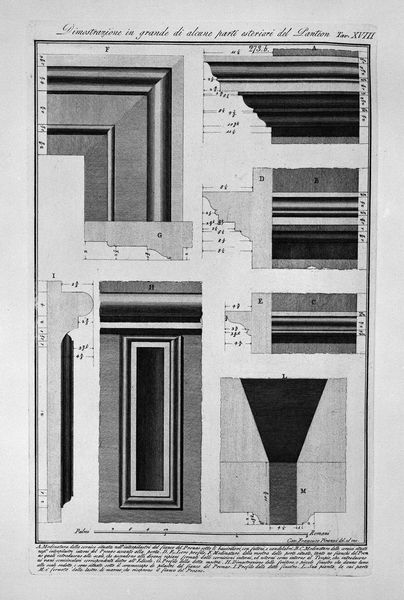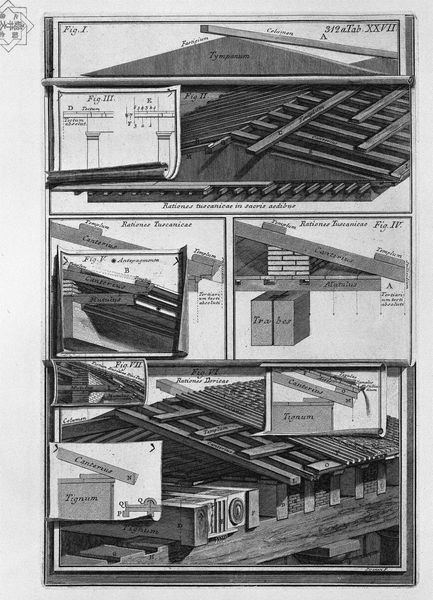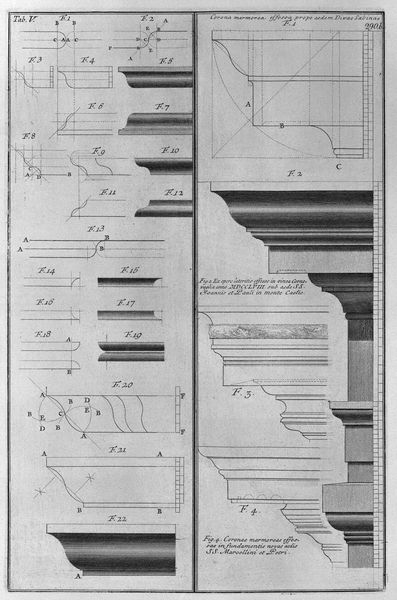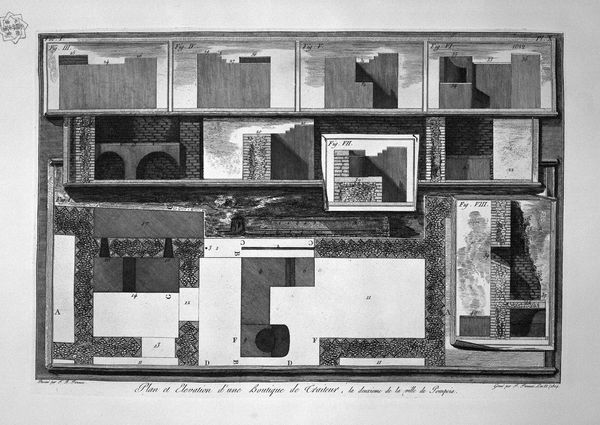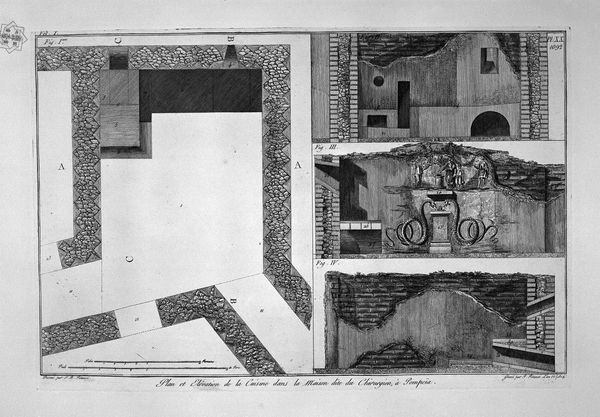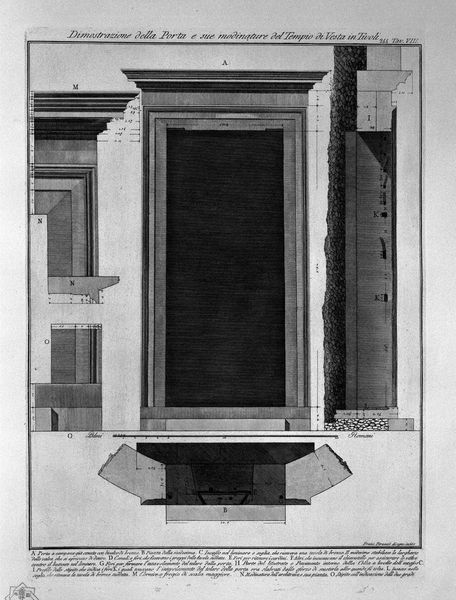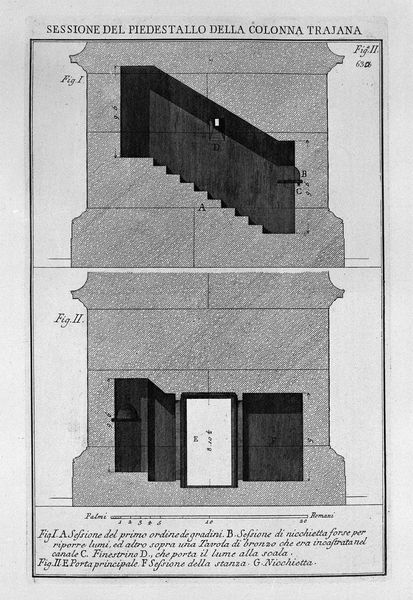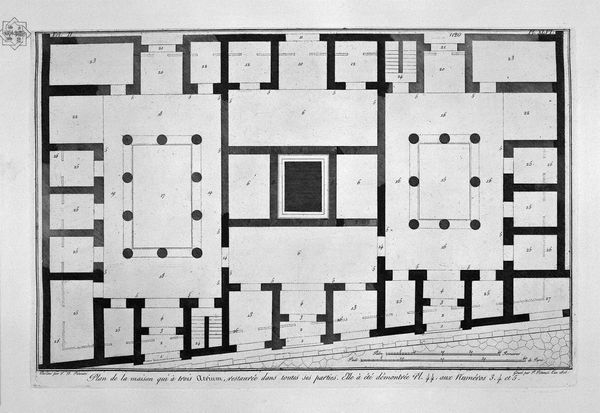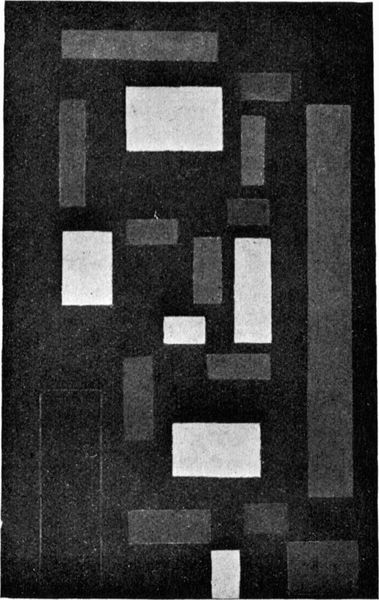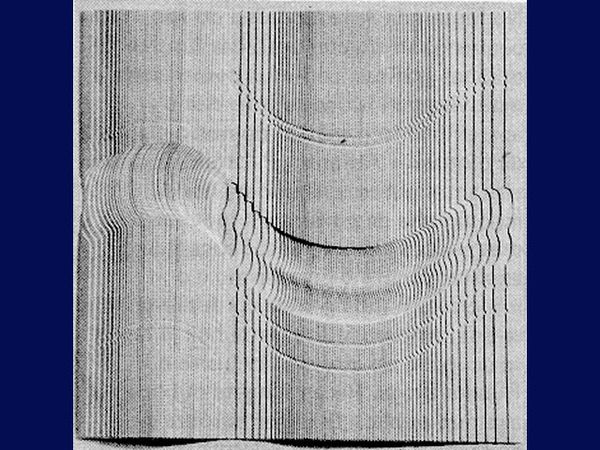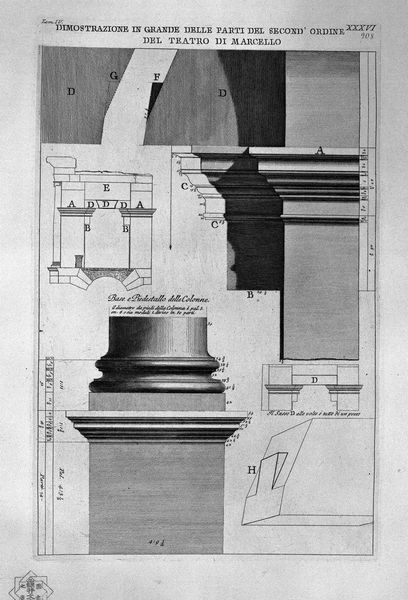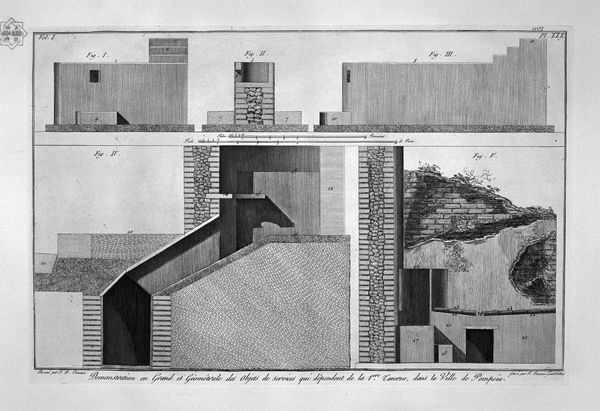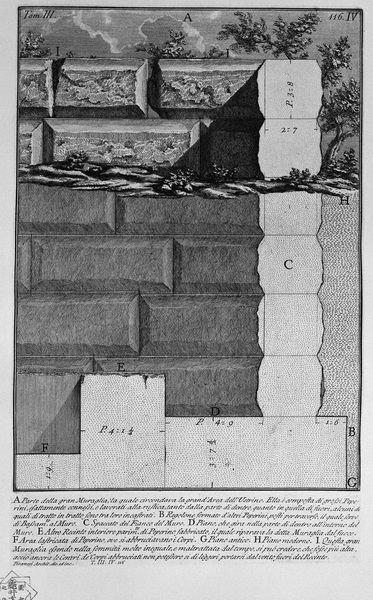
drawing, print, engraving, architecture
#
drawing
#
baroque
# print
#
perspective
#
arch
#
architecture drawing
#
engraving
#
architecture
Copyright: Public domain
This etching of the Pantheon’s outer facades was made by Giovanni Battista Piranesi, sometime in the mid-18th century. It is made through the incisive and highly skilled technique of etching, where the artist covers a metal plate in wax, draws into it with a sharp needle, and then bathes the plate in acid. This bites the drawn lines into the metal, which is then inked and printed. The image shows a section of the Pantheon, with a careful differentiation between the various stone textures and construction methods used in its erection. The image isn't just a faithful record of what was there. It also embodies Piranesi’s obsession with Roman antiquity. It is a kind of three-dimensional archeological record. His intense involvement with the past influenced the architectural fantasies he also created – his famous “prisons.” Thinking about this etching allows us to reflect on the relationship between drawing, technical skill, and the social value assigned to ancient monuments like the Pantheon. Etchings like these allowed accurate information to circulate, inspiring new generations of architects and designers. It’s a reminder that the way we record the world is itself a form of making.
Comments
No comments
Be the first to comment and join the conversation on the ultimate creative platform.
